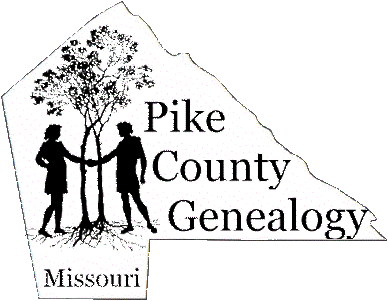

Prairieville Township
|
Prairieville township was the tenth and last
township established in Pike County, carved out of the southwestern corner of
Calumet township in February 1870. It is located in the southern portion of the
county and is bounded on the north by Buffalo and Calumet township, on the south
by Lincoln County, on the east by Calumet township, and on the west by Cuivre
township. Prairieville's creation as a township was somewhat of a mystery, and
in fact the "History of Pike County" published in 1883 pokes fun at
its existence saying "…this is the baby township of Pike County, and as
in other families of nine children, there appears no good reason why this, the
tenth, should ever have been born."
Although Prairieville township was never characterized by numerous bustling towns or widespread industry, it has, nonetheless, made its mark on the county with its fertile farmlands and the communities of Aberdeen, Prairieville and Eolia.
Aberdeen (the house), located along what is now Route D, was built by Walker Gilmer Meriwether and Jane Warner Lewis (who were first cousins - it was very common for the Lewis' and Meriwethers to intermarry, for members of the Lewis family to marry other Lewis', or for members of the Meriwether family to marry Meriwethers) after they came to Pike County in the mid 1830s from Virginia. Walker had first come about 1820 with his brother, Dr. Fontaine Meriwether. Walker and Jane's great-grandfather was Parson William Douglas (a teacher of Thomas Jefferson) who was from Scotland. The farm name is believed to have come from the area in Scotland where Parson Douglas was from. A post office was established in 1891 at the tollgate on this land and took its name from the farm. The post office was discontinued in 1904, however, the showplace farm still remains and can be seen from the road.
The history of the towns of Prairieville and Eolia is entwined, as Eolia's "birth" was the cause of Prairieville's demise. Prairieville was laid out in 1837 by William Nalley and was so named because of its location on the edge of prairie land. It was settled by a number of families from Virginia who came to Pike County in 1835 by wagon train supplied with oxen-drawn wagons, pack horses, riding horses, cattle and many slaves. Among these early settlers were two Meriwether brothers, Doctor Fontaine and Walker Gilmer Meriwether, who acquired 50,000 acres of land in southern Pike and northern Lincoln Counties. The town of Prairieville prospered and grew until it contained in the middle 1800's a post office, general store, harness shop, livery stable, blacksmith, churches and schools. In 1838, the Methodist Church was organized in Prairieville, and in 1847, the first Episcopal Church west of the Mississippi was established north of the town and was later named St. John's Church. This church still stands intact and has been declared an historic landmark. The tobacco industry prospered in this area, and in 1841, the Prairieville Tobacco Factory was operating with its proprietor, George W. Thurmond, receiving high cash prices for his tobacco. Pike County tobacco often received top honors as the best tobacco at the annual Planter's Warehouse Sale in St. Louis. Pike Countians, Mrs. M. C. Meriwether, Mrs. Jane Anderson, and W. E. Wells all received first awards there in 1859. Prairieville residents joined in the Gold Rush to California in 1849; participated in the California cattle drives of 1850; and fought on both sides during the Civil War. When the St. Louis to Hannibal Railroad was built in approximately 1880, it by-passed Prairieville by just under one mile. When this happened, many Prairieville businesses moved to be located along the Short Line Railroad. This business area on the Short Line was surveyed and laid out by Francis Thornton Meriwether of Louisiana in 1881. Because of this new town's proximity to Prairieville the latter faded away. A church, some old cedar trees, deep banks of the old road bed, and two cemeteries are the remaining markers of where old Prairieville once stood. When asked what he thought this new town should be called, Meriwether replied "Aeolia", the Latin word for "wind", because it had been so windy and cold when the survey was completed in February of 1881. The "A" was dropped from the name, and the town was called Eolia. The town was founded on the Wood Lawn Farm once owned by Major Henry J. Pollard. The first business house was built by George Turner, who dealt in grain and general merchandise. By 1882, Eolia had its own post office and Theodore Black served as its first postmaster. He had been postmaster at Prairieville prior to this time. With the building of homes, hotels, harness shops, stores, rooming houses, schools, churches and banks, Eolia soon grew into a prosperous town. Eolia was incorporated in 1964. Its population, estimated at approximately 400 in 1980, has remained fairly stable in recent years, although the children now attend Clopton Schools, rather than local schools, and the Short Line Railroad which gave birth to the town no longer services the area. One thing which has remained unchanged is the rush of the unobstructed westerly wind from which the town received its name.
|

|
Cemetery Information |
||
|
|
||

|
© 2000 Rhonda Stolte Darnell |